The enigmatic nature of outer space has always captivated the human imagination. Since ancient times, astronomers have sought to unveil the mysteries of the universe and discover the closest star to our own. Through the invention of various instruments, they observed the twinkling lights in the night sky. With modern scientific advancements, we now have the ability to study celestial bodies that are located far beyond our planet. As a result, we have been able to identify the stars that are closest to Earth.

The Sun is our nearest star
Our nearest star, located at a distance of nearly 15 million kilometers from Earth, is the Sun. Similar to all other stars, it lacks a solid surface. The Sun is composed of helium and hydrogen gases, which are held together by the force of gravity. Classified as a yellow dwarf, it emits a nearly white light.
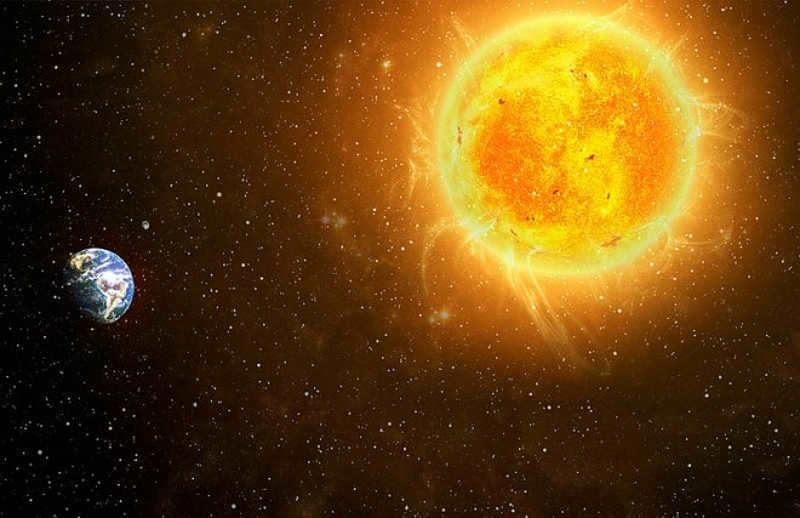
The following information is particularly fascinating:
- the star is the sole luminary within the solar system;
- the Sun has an estimated age of around 4.6 billion years;
- the surface temperature of the star reaches a scorching 5.5 million °C;
- the core’s temperature rises to an astounding 15 million °C;
- to replicate the amount of energy emitted by a star, approximately 100 billion tons of dynamite would need to detonate every second.
Scientists have calculated that the Sun has enough nuclear energy to sustain itself for approximately 5 billion years. Once its hydrogen reserves are exhausted, the Sun will undergo a transformation and become a Red Giant. Eventually, the core will collapse, resulting in the Sun becoming a White Dwarf, marking the final stage of its lifespan.
Proxima Centauri
Proxima Centauri is the nearest star to Earth, second only to the Sun in proximity. It is located approximately 4.22 light-years away from our planet. In terms of size, it is nearly seven times smaller than the Sun. This particular star was first observed and documented in the year 1915. Due to its classification as a red dwarf, it emits minimal amounts of energy, making it impossible to see without the aid of a telescope.
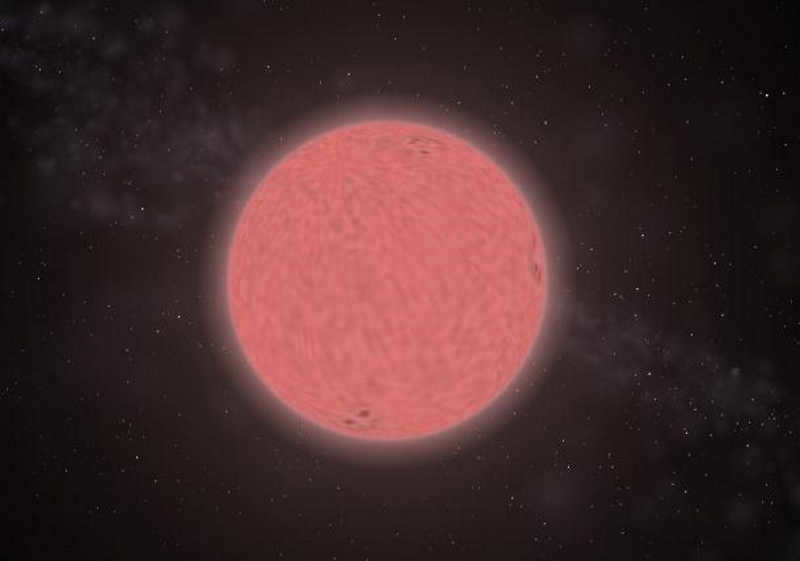
Proxima Centauri is a component of the Alpha Centauri system. Astronomers speculate that there could potentially be exoplanets revolving around this celestial body. However, conducting observations of these distant worlds presents a considerable challenge. To overcome this hurdle, scientists have planned the launch of the most advanced space telescope in 2018. This cutting-edge instrument will provide astronomers with the opportunity to conduct a comprehensive study of Proxima Centauri and its planetary companions.
Alpha Centauri
Alpha Centauri A and Alpha Centauri B are ranked third in terms of distance from our planet. They are located about 4.36 light-years away in the constellation of Centauri. It is not possible to observe both stars simultaneously with the naked eye due to their close proximity. They appear as a single bright point in the sky. However, with the aid of a small telescope, it is possible to observe both stars individually.
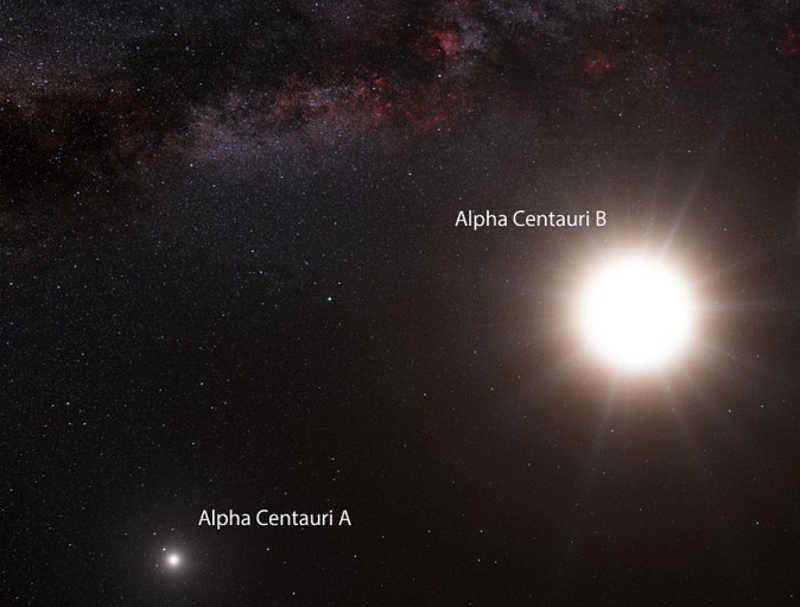
Alpha Centauri A, which is depicted in the image above, is more than one and a half billion years older than our Sun. Despite being a yellow dwarf like the Sun, it is slightly bigger in size. On the other hand, Alpha Centauri B is an orange dwarf.
Barnard’s star
Ranking fourth in terms of its proximity to our planet is Barnard’s star. This red dwarf was first observed by American astronomer Edward Barnard in 1916. It is situated approximately 5.96 light-years away from Earth. Due to its low energy emissions, this star can only be observed using a telescope. Currently, scientists have not yet been able to ascertain whether this lone luminary in the constellation Serpens possesses any planets.
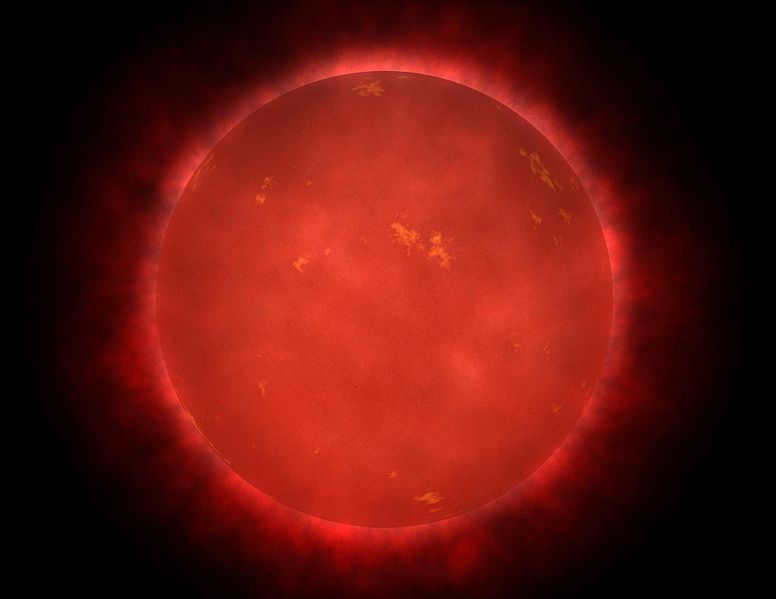
Luman 16.
Luman 16 A and Luman 16 B, two stars located approximately 5.98 light-years away from Earth, were found in the constellation Sails, making them the fifth closest stars to our planet. These brown dwarfs were first observed in 2013 by the renowned American astronomer Kevin Luman, who subsequently named them. The stars are separated by a distance of 3 astronomical units. As of now, there has been no successful detection of any planets orbiting these stars.
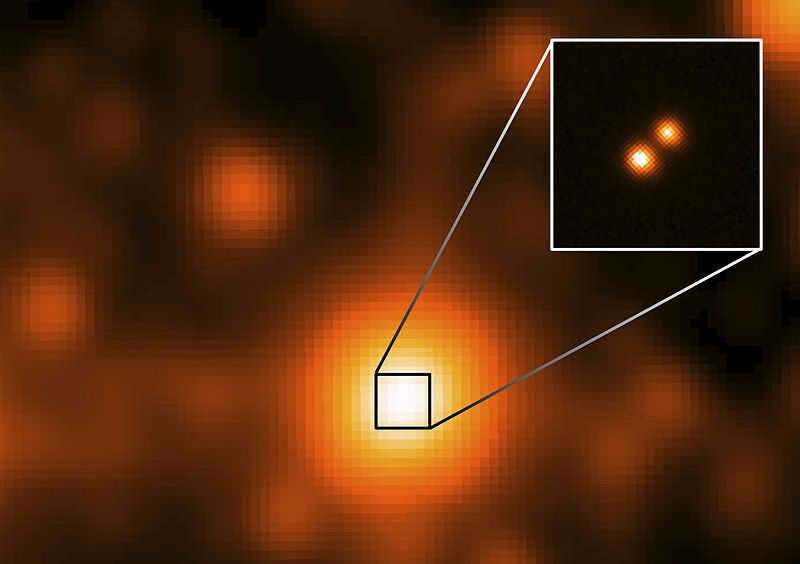
WISE 0855-0714
In 2014, Kevin Luhman made the discovery of the sixth closest star to Earth. This star was observed using the WISE telescope, which is now named after it. The brown dwarf emits very faint radiation, making it undetectable to the naked eye. It is located at a distance of 7.27 light-years from Earth. Scientists have determined that WISE 0855-0714 is the coolest star in the known universe.
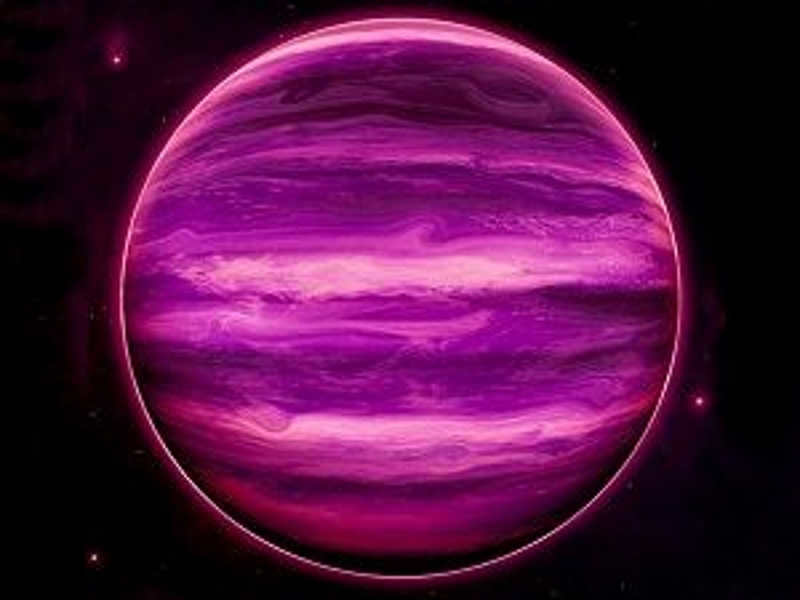
The Nearest Star to the Sun
In 1918, using astrophotography, Max Wolf, a German astronomer, successfully identified a star that ranks seventh in terms of its proximity to our planet. This red dwarf star was named after its discoverer. Due to its weak radiation, it can only be observed using astronomical equipment. The distance between Wolf 359 and Earth is approximately 7.78 light-years.
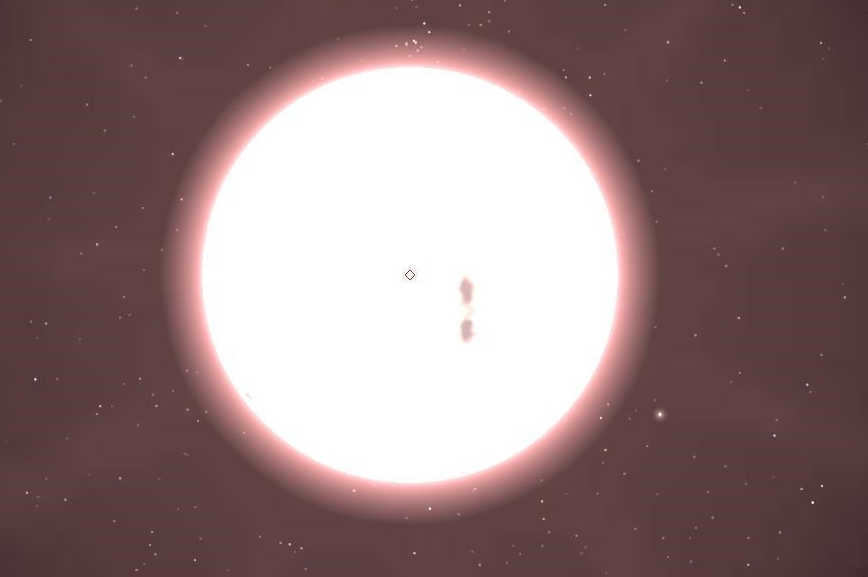
Star Lalande 21185
Among the nearest stars to Earth, one of the top ten is the star Lalande 21185. This star was discovered in 1801 by the French astronomer Joseph Lalande. It is classified as a red dwarf and is located approximately 8.29 light years away from our planet. Ongoing research has revealed that Lalande 21185 is a variable star that belongs to the Ursa Major constellation. So far, no planets have been detected orbiting this star by astronomers.
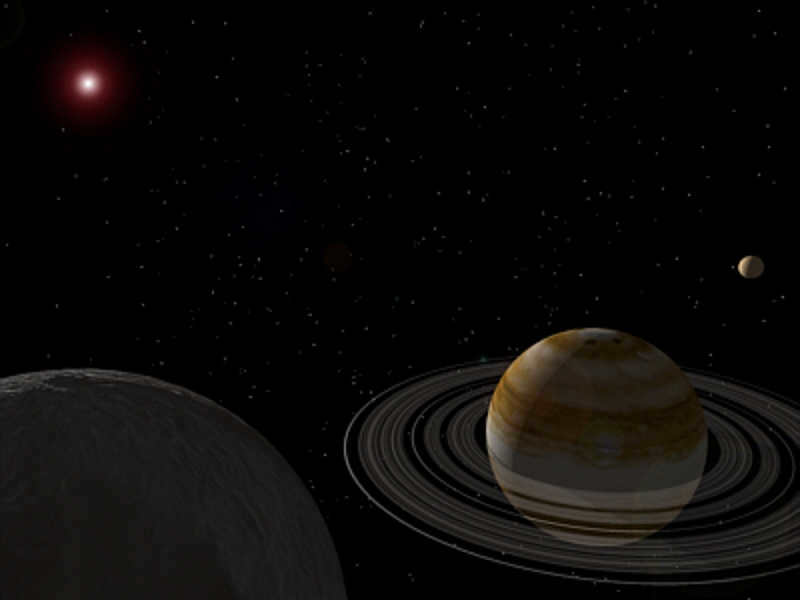
Sirius AB
Ranked ninth in terms of its closeness to Earth, Sirius AB consists of two stars: Sirius A and Sirius B. Prior to 1844, it was commonly believed that these two stars were actually one, until Friedrich Bessel proposed the idea that they were actually two separate luminaries. This theory was confirmed in 1862 when Alvan Clarke discovered the existence of Sirius B.

One of the closest stars to Earth is Sirius A, which is a white dwarf, while Sirius B is a yellow dwarf. These two stars are located approximately 8.58 light years away from our planet. The fascinating double star system known as Sirius AB can be easily seen in the night sky. It is visible from all parts of the world, except for the northernmost region.
Leiten 726-8
The tenth position on the list of stars closest to Earth is held by Leiten 726-8. This binary star system is located approximately 8,728 light-years away from our planet. Both of these stars can be found in the constellation of China and were first observed by Dutch-American astronomer Jacob Leiten in 1948. It was discovered that both stars in this system are red dwarfs.
Within the orbit of Barnard’s star, just 6 light-years from Earth, lies an exoplanet. This planet has a year that lasts 233 Earth days and has a surface temperature that is barely above -170 degrees Celsius.
Scientists have made an exciting discovery in the second farthest star system from our Sun, which is located 6 light-years away. They have found a rocky exoplanet that is at least 3.2 times more massive than Earth. This exoplanet orbits a red dwarf star, and it is situated near the snow line. The study, which is based on over 20 years of observations using ten different instruments from around the world, has been published in the prestigious journal Nature.
“Barnard’s star has always been a fascinating object for astronomers, as previous studies hinted at the existence of planets in its orbit. However, further analysis revealed errors in the calculations. Now, we can confidently say that there is at least one planet orbiting Barnard’s star, with a 99 percent certainty!” – exclaimed Guillem Anglada Eskude, a researcher from Queen Mary University in London (UK), who participated in the study.
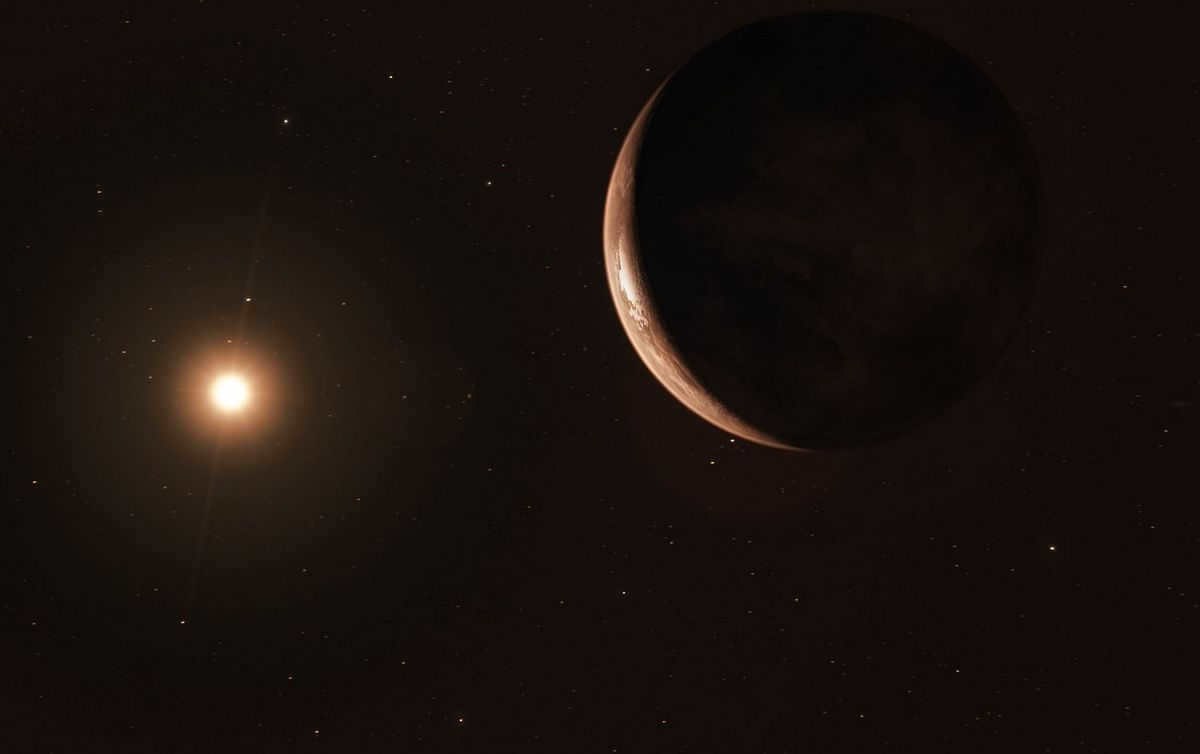
The exoplanet was found as part of the Red Dots and CARMENES projects and is the outcome of close cooperation between a team of over 60 scientists from various countries.
Swiftest star in the heavens
Barnard’s star is located in the equatorial constellation of Serpens, visible throughout Russia except for the northern regions. It is the fourth farthest star from the Sun and the nearest individual luminary. Discovered in 1916 by American astronomer Edward Emerson Barnard, it was named after him. In the late 1960s, American astronomer Peter van de Kamp announced the presence of three gas giants in its system, but his calculations are now considered to be incorrect.
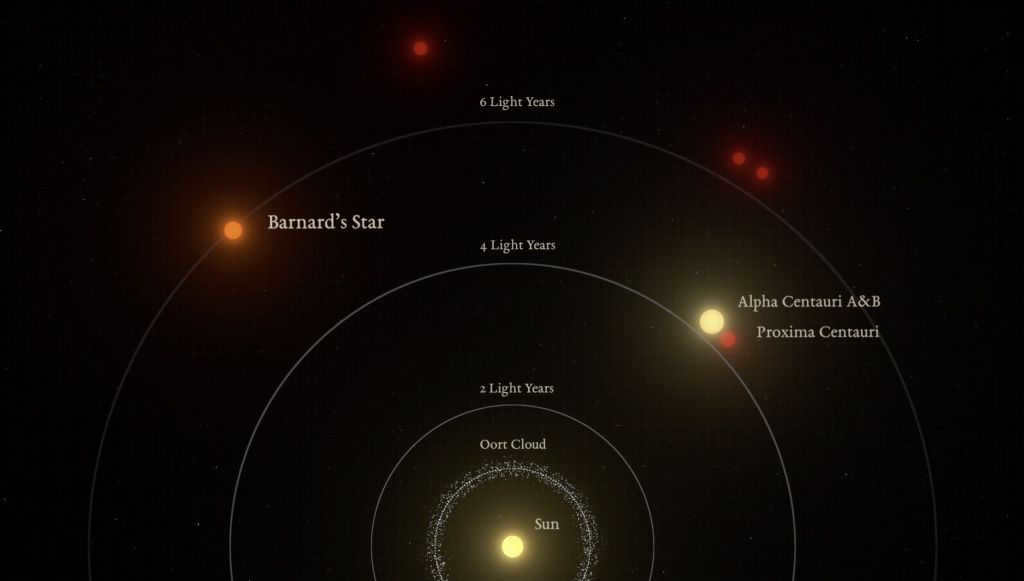
Barnard’s star, known as a cold, ancient red dwarf, is believed to have an age of 7-10 billion years. It is significantly smaller than our Sun, both in terms of mass and radius, measuring about six times smaller. Barnard’s star is often referred to as the “flying” or “fugitive” star due to its exceptionally high angular velocity compared to other celestial objects. Over a period of 174 Earth years, this red dwarf shifts its position by half a degree in the sky, which is equivalent to the size of the Moon’s full disk. Additionally, the star has a total speed of approximately 500,000 kilometers per hour relative to the Sun.
A Twenty-Year Observation of Barnard’s Star
Scientists have been searching for exoplanets orbiting Barnard’s star for many years, but until now, they have come up empty-handed. The breakthrough came when they combined data from multiple high-precision instruments installed on telescopes located in various parts of the globe.
“By merging archived data collected by other researchers with newly acquired overlapping measurements of Barnard’s star using different equipment, we were able to make this groundbreaking discovery of an extrasolar planet,” said Guillem Anglada Eskude.
In order to locate the exoplanet, astronomers employed the Doppler effect, which can be summarized as follows. When a massive object orbits around a star, the gravitational force causes a slight shift in the star’s position. As the star moves away from Earth, its spectrum undergoes a red shift, indicating a slight increase in the wavelengths within its spectrum. Conversely, when the star moves towards Earth, the wavelengths of its radiation shift towards the shorter, blue end of the spectrum.
Scientists are utilizing this phenomenon to measure alterations in a star’s speed caused by the presence of an exoplanet, requiring exceptional accuracy. The HARPS instrument from the European Southern Observatory, which played a crucial role in the discovery, can detect variations in the luminous body’s velocity of 3.5 kilometers per hour. This method of “capturing” distant planets is known as the radial velocity method, and it is the first time it has been employed to observe a super-Earth in an orbit so distant from its host star.
The Frozen Super-Earth and its Potential for Life
A newly discovered planet, named Barnard’s star b (or GJ 699 b), has captured the attention of astronomers. This distant world is currently the second farthest known planet from Earth, trailing only behind Proxima b. Scientists have categorized it as a “super-Earth” due to its similarities in size and composition to our own planet.
Barnard’s star b has a minimum mass of 3.2 times that of Earth and its orbital period is 233 Earth days. However, what makes this exoplanet truly fascinating is the fact that it orbits a relatively faint star. As a result, Barnard’s star b receives a mere 2 percent of the energy that Earth receives from the Sun.
Despite being relatively close to its parent star at approximately 0.4 astronomical units, the exoplanet is positioned near the snow line, which marks the boundary where volatile substances like water vapor can freeze into ice. In this frigid and dim environment, the temperature is likely around -170 degrees Celsius. These extreme conditions are not conducive to supporting life as we know it.
Additional research
Ignacius Ribas states that they will continue monitoring this rapidly moving star to eliminate any potential natural fluctuations in its brightness that could be mistakenly identified as the presence of a planet, although this is highly unlikely.
Further investigations are already in progress at various observatories with the aim of increasing confidence in the findings. Moreover, the Barnard star system is an ideal candidate for examination by the next generation of telescopes specifically designed for direct imaging of exoplanets, such as NASA’s Wide Field Infrared Survey Telescope (WFIRST), which is slated for launch in 2024.
If the direct imaging of Barnard’s star b were possible, it would yield valuable data about its characteristics and contribute to a deeper understanding of the various types of planets that can form around red dwarfs.
While the Sun is the closest star to Earth and holds familiarity for all, it is the celestial bodies beyond our solar system that capture the attention of both scientists and amateur astronomers alike.

The Nearest Star and Its Distance from Earth
The Sun is Earth’s closest star, situated approximately 1 astronomical unit away (nearly 150 million km), and its light takes about 8 minutes to reach our planet. One of its unique features is its visibility to an Earth observer even during daylight hours, unlike most other nearby celestial objects that can only be observed at night.
Within a radius of 10 light-years from our location, there are 9 star systems, although some of them consist of double or triple stars. In total, this list includes 14 celestial bodies. Additionally, there are 3 brown dwarfs in this list, which are significantly less massive than “full-sized” stars.
Alpha Centauri star system
The Alpha Centauri star system is a triple luminary that is situated at an average distance of 4.37 light-years from our planet. The estimated distance to two of its three constituents, which are yellow dwarfs resembling the Sun in some aspects, is approximately 4.55 light-years. These yellow dwarfs can be observed with the naked eye from Earth. They are not stationary but instead revolve around a conventional center point, completing a full revolution in 79 Earth years.
The third star in the Alpha Centauri system is a red dwarf known as Proxima. It is positioned closest to us, with a distance of 4.2 light-years, but can only be seen using astronomical equipment. Proxima has a smaller size and mass compared to its neighboring stars and moves at a slower pace. Its revolution around the center of its star formation is believed to last 500,000 years, although this fact is not yet definitively proven, just like the notion that Proxima is part of this triple luminary.
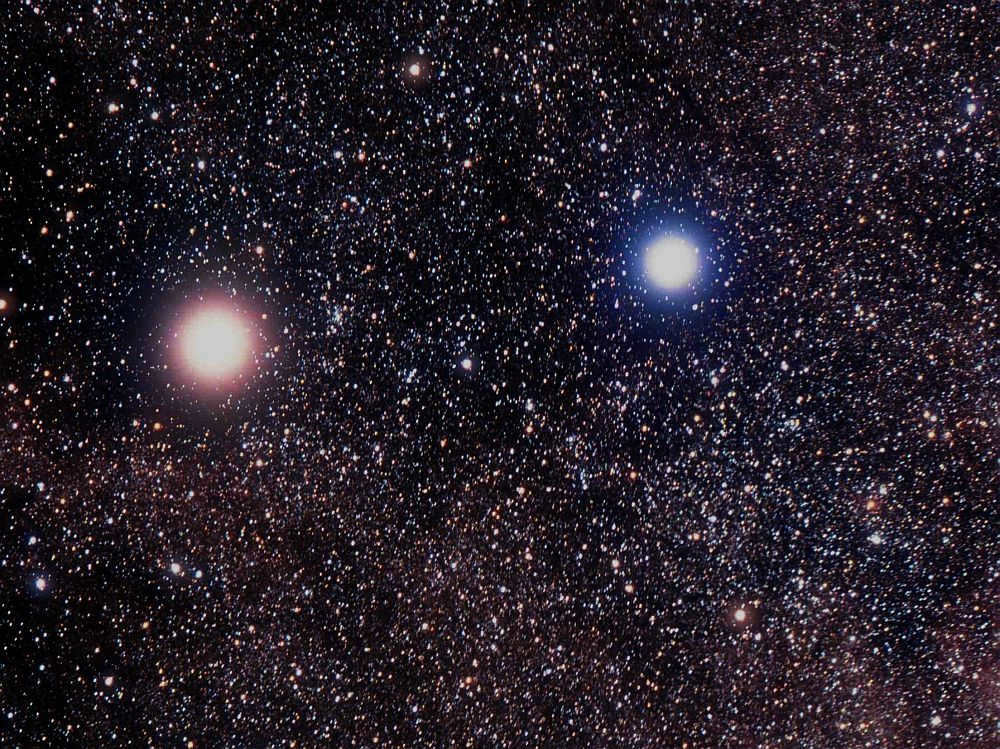
List of the nearest stars to the Sun
Additionally, within close proximity to our Sun are:
- Barnard’s star, which is situated 6 light-years away in the Serpentor constellation and is classified as a red dwarf;
- The Luman-16 binary star system consisting of two brown dwarfs at a distance that light would take 6.5 years to travel;
- Wise-0855, a sub-brown cold dwarf with a negative surface temperature (-30°C) that was discovered in 2014 by the Wise orbiting infrared telescope and named after it. It is located 7.3 light-years away;
- Wolf-359, a red dwarf that is yet to be thoroughly studied and exists at a distance similar to that of the Sun.
- The red dwarf Laland-21185 (also known as Gliese-411) is located in the Big Dipper constellation and is 8.3 light-years away;
- Sirius is composed of two separate luminaries, alpha of the Big Dog, and is situated 8.5 light years away;
- Leiten-726-8 is a double red dwarf that pulsates and is located 8.7 light-years away from the Sun;
- Ross-154 is a young red dwarf in the Sagittarius constellation, and the light from it will reach us in 9.7 years.
This list does not include another object of the first stellar magnitude – Procyon, which is yellowish-white and is located in the Little Dog constellation at a distance of 11.4 light years from us.
Too far from our planet are the 12th brightest luminary Altair and the star Ross-614, both mentioned in Ivan Efremov’s novel “The Andromeda Nebula”.
The Future of Change
The stars in the vast expanse of the Universe are in constant motion, never standing still. Among them, the fastest star is known as Barnard, often referred to as the “Flying” star. Over the course of 10,000 years, Barnard will come approximately 2 times closer to us, reducing the distance to about 3.8 light-years. In another 33,000 years, the closest star to our solar system will be a faint red dwarf called Ross-248, which belongs to the Andromeda constellation and is currently located approximately 10.5 light-years away from Earth.
In 1.35 million years, the solar system will experience the approach of Gliese-710, which is currently 11 times farther away from us than this distance. Some scientists predict that this orange dwarf will come even closer, reaching a distance of just 1 light-month away. Although it will still be thousands of times farther away than the Sun is now, it will be significantly closer than any other stars.
Once Gliese-710 nears, it will become the third brightest object in the night sky, following the Moon and Venus. However, there may be negative consequences associated with its approach. For instance, there could be disruptions in some areas of the Oort cloud, causing comets to deviate from their orbits and potentially collide with Earth. Such collisions could lead to mass extinctions and other catastrophic events on our planet.
The Sun constitutes 99.9% of the total mass of the solar system. Its composition primarily consists of hydrogen (73%) and helium (25%). Additionally, it contains trace amounts of iron, nickel, nitrogen, oxygen, sulfur, silicon, carbon, magnesium, calcium, chromium, and neon.
With a density of 1.4 g/cm3, the Sun is classified as a yellow dwarf star. When compared to Earth, the Sun’s diameter is 109 times larger, its mass is 333,000 times greater, and its volume is 1,300,000 times larger. The Sun has a lifespan of approximately 4.57 billion years.
The position of the Sun within the Milky Way galaxy is relatively insignificant. Our star resides within the intermediate spiral arms of Perseus and Sagittarius. The region in which we inhabit has remained undisturbed for hundreds of millions of years. The galactic center lies approximately 26,000 light years distant, and our celestial body orbits around it at a velocity of 220-240 km/sec over a span of 225-250 million years.
The origin of life on Earth is believed to have occurred in the current location of the solar system. If our position were closer to the center of the galaxy, the presence of neighboring stars would disrupt the tranquility.
Composition
Surface
The outer layer of the Sun is known as the photosphere. It has a thickness of approximately 300 kilometers. When observed closely, the photosphere exhibits a granular structure. The gas on the Sun is in constant motion, causing it to rise to the surface within the granules and fall in the spaces between them.
Solar Blemishes
These are regions of diminished temperature on the surface of the Sun, contrasting with the higher temperatures of the surrounding photosphere. Consequently, these regions manifest as darker spots, with the most prominent spots visible to the unaided eye. Currently, from the perspective of Earth’s observation, the sunspots appear as follows:
An assessment of the relative sizes of Earth and sunspots
Exploring the Interior of the Sun
Beneath the surface lies the convection zone, a region where energy is transported from the core to the outer layers through the process of convection, resembling a mixing motion. Moving towards the core, energy is primarily carried by radiation. However, the journey of each photon through this zone can take millions of years, as it is repeatedly absorbed and re-emitted by matter.
At the very heart of the Sun lies a dense and scorching nucleus, where powerful nuclear reactions occur. In close proximity to the core, temperatures can soar up to a staggering 15,000,000 degrees Celsius! This article provides a comprehensive understanding of the internal structure of our closest star.
Solar wind: a continuous stream of plasma from the Sun
The solar wind is an ongoing flow of plasma that originates from the atmosphere of the Sun and fills the entire solar system.
Due to the extremely high temperature of the solar corona, the pressure from the surrounding layers is unable to balance it. As a result, the corona matter is expelled into space in the form of the solar wind, extending up to a distance of 100 astronomical units.
In the provided illustration, the empty region at the center spans an area 32 times greater than the size of the Sun. The image’s diameter is half that of Mercury’s orbit. The dots visible behind the Sun represent stars.
Reasons behind the Sun’s Radiance
The luminosity of the Sun is a result of the immense energy released through a thermonuclear reaction occurring in its core. While a minimal amount of matter is consumed, a significant amount of energy is generated (millions of times more than in regular combustion).
Related: Misconceptions and Realities about the Distance to the Sun
The prevailing belief used to be that the Sun shines due to the burning of its constituent elements. However, even a rough estimation suggests that the Sun cannot sustain this “burning” process for billions of years. If it were to lose mass over time, it would disrupt the gravitational equilibrium within the planetary system, leading to its demise. Despite these hypotheses, the Sun has continued to emit light for billions of years and shows no signs of extinguishing anytime soon.
A solar eclipse occurs when the Moon obstructs all or part of the Sun from the perspective of an observer on Earth. During an eclipse, it is possible to witness the solar corona.
The Origins of the Sun
The Sun contains a significant amount of gold and uranium in its composition. These elements were formed within the cores of early stars and were dispersed through supernova explosions. According to the prevailing theory, the Sun and the entire solar system were formed from a gas and dust cloud, which was the residue of a supernova star’s explosion.
There are several known celestial bodies that resemble our Sun in terms of mass, brightness, age, and temperature. These include 18 Scorpius, 37 Gemini, Beta Hound Dog, HD 44594, and HIP56948.
The Sun, our solar system’s central star, is the closest celestial body to Earth and is easily visible on a clear day. However, during the night, we can observe other luminous objects scattered throughout the vast cosmos. The exact number of stars that fill the Universe is incalculable. However, scientists have identified and compiled a list of the nearest celestial bodies within a radius of 16 light-years. This list consists of 57 star systems, some of which are not single stars but double or triple star systems, bringing the total number of celestial bodies to 64. Additionally, the list includes 13 brown dwarfs, which have significantly less mass compared to other objects.
Out of the list, only 7 stars are visible without the need for optical amplification. These stars are Alpha Centauri, Epsilon Eridanus, Epsilon Indian, Tau Kita, and 61 Swan. Their apparent magnitudes range from 1.43 to 6.03. Most of these stars belong to the red spectral class M and have temperatures between 2600-3800 K. There are also a couple of hot stars in the list, such as Sirius A, which belongs to the white spectral class A and has a temperature of 9940 K, and Procyon A, which belongs to the yellow-white spectral class F and has a temperature of 6650 K. Additionally, the list includes brown dwarfs from the spectral classes L, T, and Y. Lastly, there are 4 white dwarfs of class D, which are quite rare objects in the visible sector of the Galaxy.
Alpha Centauri – the Nearest Star System to Earth: Its Unique Attributes
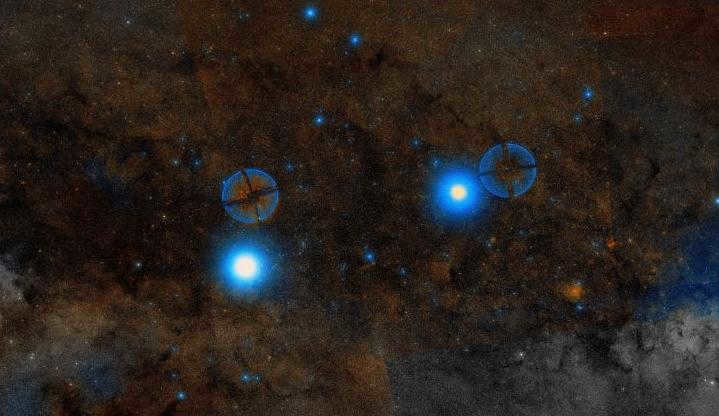
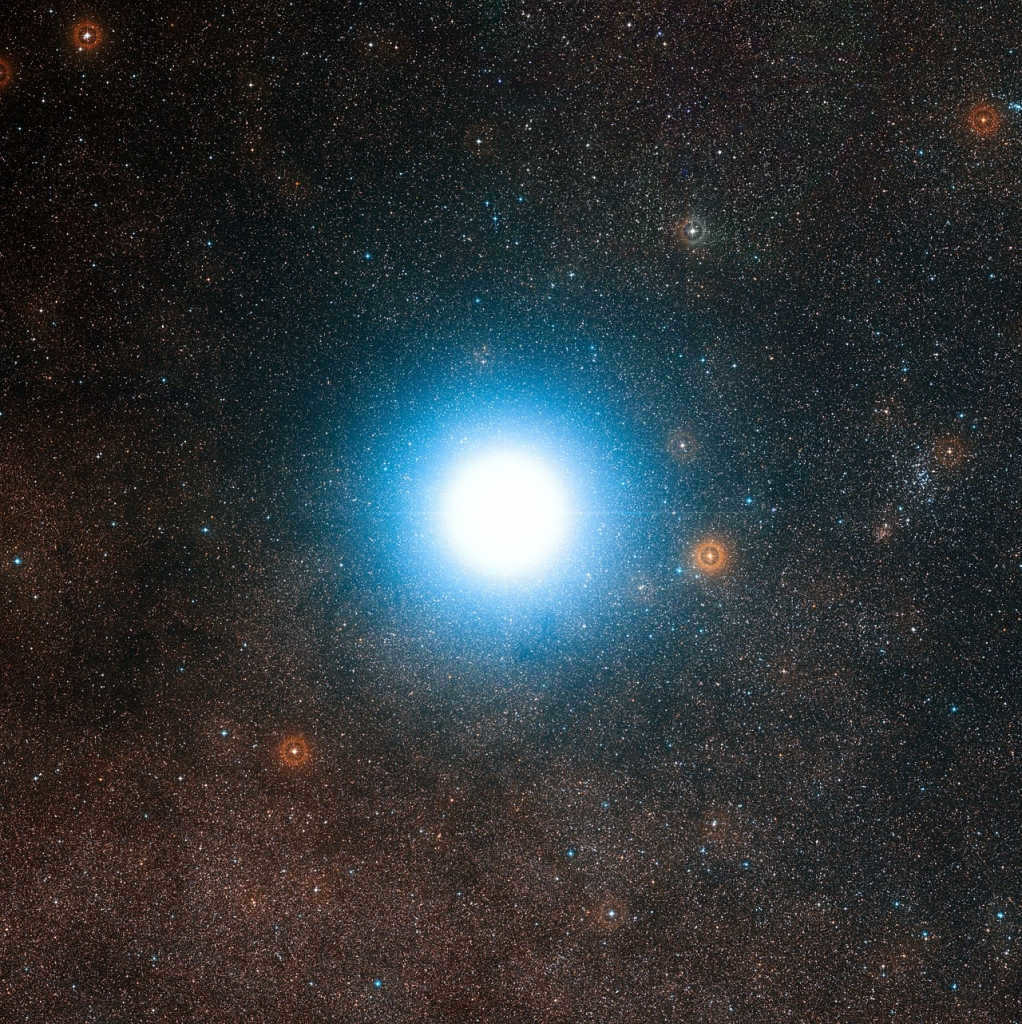
The two other parts of the system – Alpha Centauri A and Alpha Centauri B – have a close relationship with each other. When viewed from Earth, they appear as a single star. The system is located at a distance of 4.36 light years. These objects belong to the G and K spectral classes, which are yellow and orange dwarfs. They have similar characteristics and temperatures to the Sun, but are older, with an age of 6 billion years. The Centauri A component is larger than its neighbor, with a mass of 1.1 and a diameter of 1.2 times that of the Sun. Centauri B, on the other hand, has values of 0.9 and 0.86 for its mass and diameter, respectively. The stars rotate around each other in an elliptical orbit, with an inclination angle of 79.2 degrees. The period of their rotation is 79.9 years.
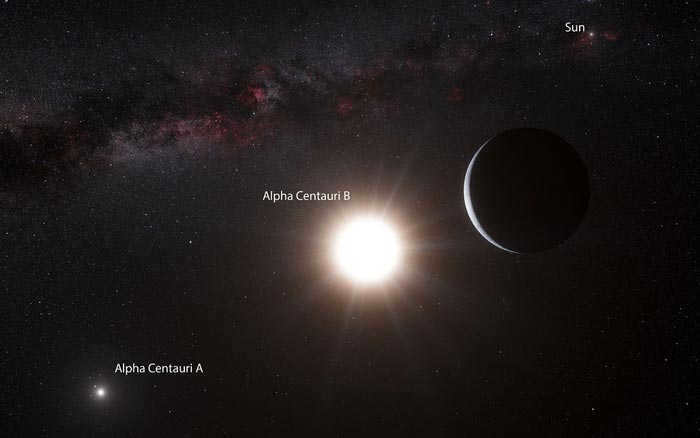
Additional research and computer simulations offer optimism regarding the existence of a second, larger, and more distant planet near Alpha Centauri B, which has a rotational cycle of 20.4 days. Theoretical calculations suggest that the influence of Centauri A would occur approximately every 70 years. If this planet possesses oceans, its barren exterior would be considerably more susceptible to damage.
Barnard’s Star
Barnard’s Star is a red dwarf star located in the constellation of Ophiuchus. It is one of the closest known stars to our solar system, with a distance of about 5.96 light-years. The star is named after the American astronomer Edward Emerson Barnard, who discovered its high proper motion in 1916. Barnard’s Star is relatively small and dim compared to our Sun, with a mass about 0.17 times that of the Sun and a luminosity only about 0.0035 times that of the Sun. Despite its dimness, Barnard’s Star is of particular interest to astronomers because it has the largest known proper motion of any star. This means that it appears to move rapidly across the sky relative to other stars. In fact, its proper motion is so large that even the naked eye can detect its movement over the course of a few years. Barnard’s Star has also been the subject of much speculation and study in the search for exoplanets. While no planets have been definitively detected around the star, its proximity and relatively low mass make it an attractive target for future exoplanet searches.
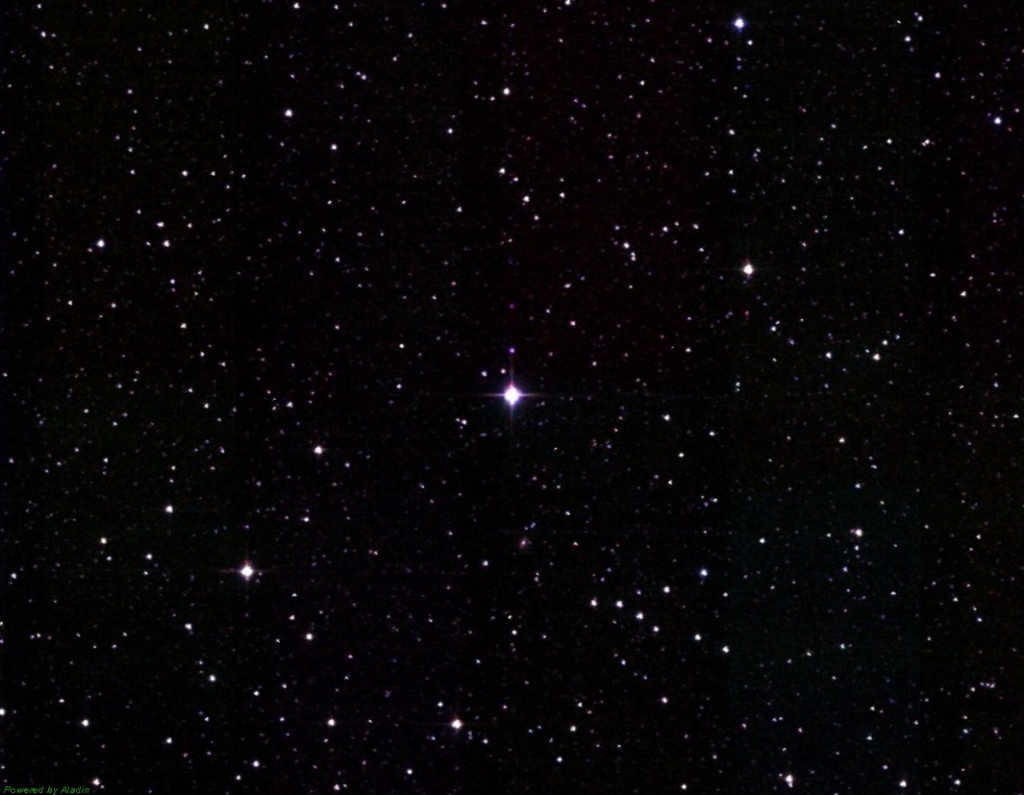
The star called E. Barnard’s star, which was discovered by E. Barnard in 1916 and named after him, belongs to the M spectral class and is classified as a red dwarf. It is located in the equatorial constellation of Serpentine and is situated approximately 5.96 light-years away from Earth. This small celestial body is much smaller than our Sun, with only 0.17 times the mass and diameter. Although it cannot be seen with the naked eye, it is the fourth closest star to us. Known as the “Flying Barnard,” this star is famous for its swift movement towards our Sun. In the future, it will come closer to us than Proxima Centauri, and its speed is astonishing, covering a distance of 10.36 angular seconds in a year.
Existence of Planets
Scientists in California have been dedicating their efforts for many years to search for evidence of planets orbiting Barnard’s star, but as of now, there is no conclusive proof of their presence.
Exploring Luman 16
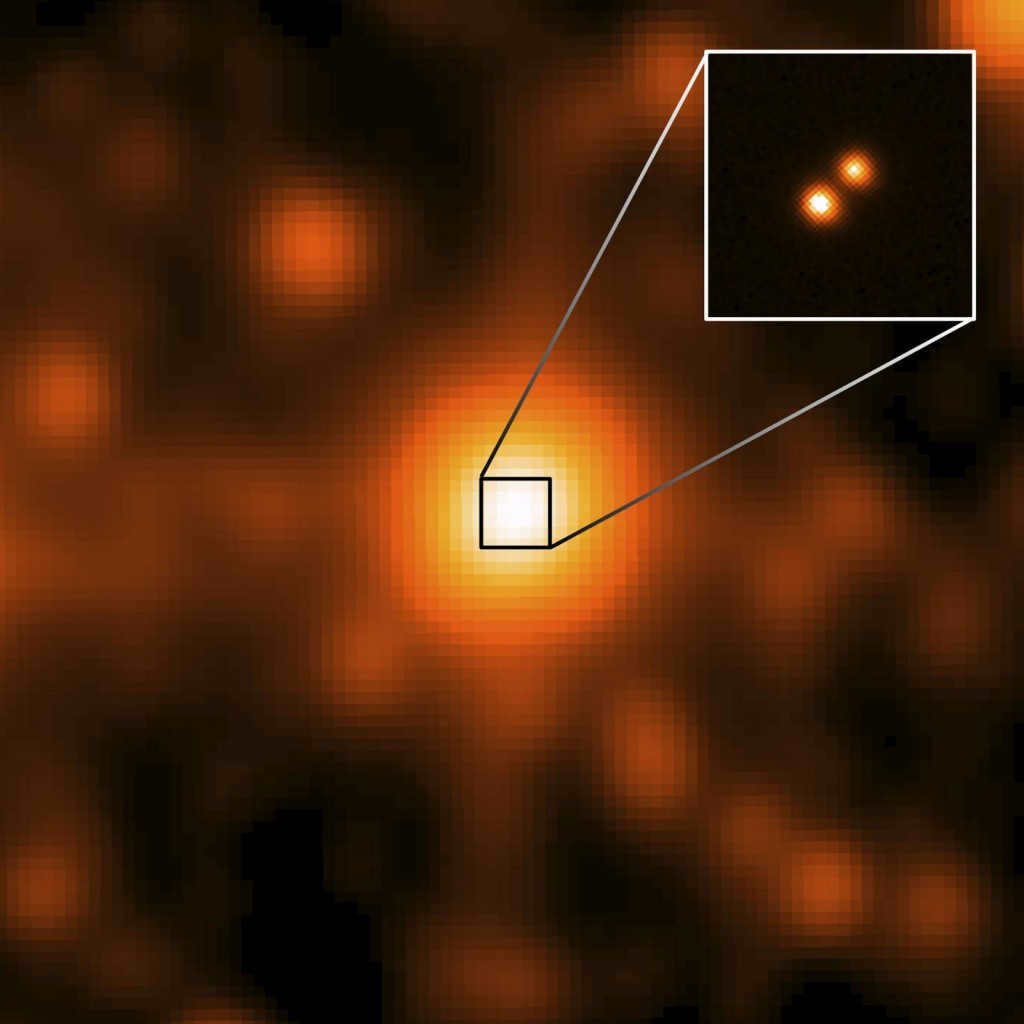
The constellation known as Carina, situated in the Southern Hemisphere, has emerged as a sanctuary for a binary system of brown dwarfs that serve as the closest neighbors to the Sun. Luman 16, which lies at a distance of 6.59 light-years away, consists of two nearly identical components, each with a mass equivalent to 0.4-0.5 times that of the Sun. The rotation period of this system spans two decades. No other celestial bodies have been observed in the vicinity of this binary star system.
Should Earth’s spacecraft embark on a voyage to our nearest neighbor, Proxima Centauri, it would require 70,000 years to complete the journey.
Out of the stars in our vicinity, only three are considered first magnitude celestial bodies: Sirius, Alpha Centauri, and Procyon. Additionally, the nearest star to Earth is classified as a red dwarf.
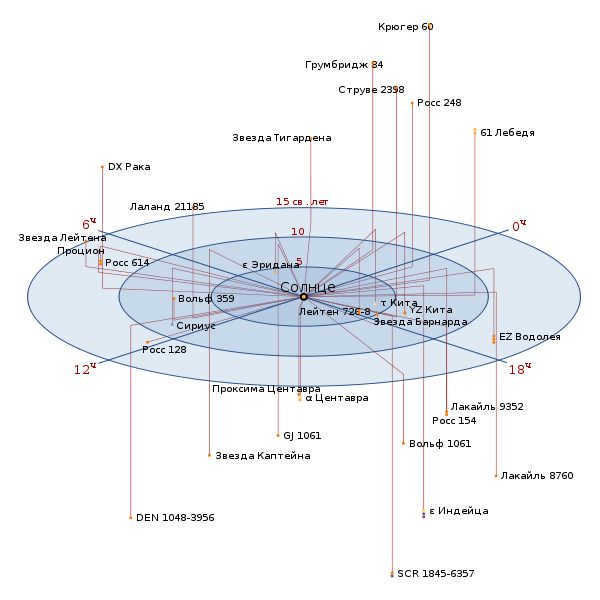
The Sun is the nearest star to Earth. Discover a star beyond our solar system – the brilliant Alpha Centauri, as well as the 20 closest stars to Earth along with their respective distances.
If you want to test your friends’ knowledge, you can inquire about the nearest star to Earth. Most would promptly mention Betelgeuse or Sirius. However, there lies the trick. Undoubtedly, the Sun (150 million kilometers away) is the closest celestial body to Earth. But, which star other than the Sun holds the title of the closest star to Earth?
Which star is the nearest to our planet?
Alpha Centauri is considered to be the closest star to Earth, apart from the Sun. It holds the third position in terms of brightness and is located just 4.37 light-years away. However, it is not a single entity but rather a triple system. The system consists of a binary pair that revolves around a shared center of gravity every 80 years. Alpha Centauri A is brighter than the Sun, while Alpha Centauri B is slightly dimmer. The third component of this system is known as Proxima Centauri, which holds the distinction of being the nearest star to Earth, situated only 4.24 light-years away.
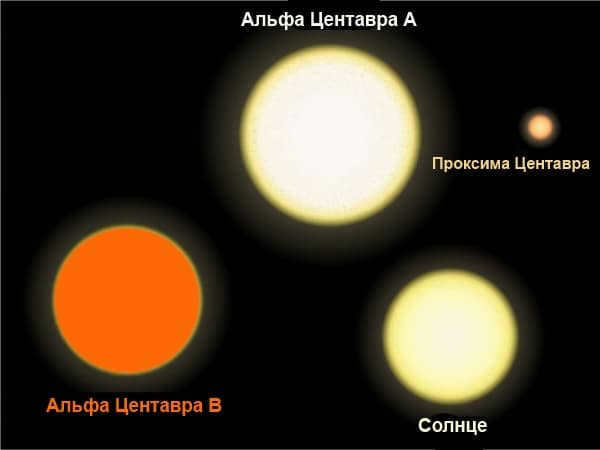
The Alpha Centauri system is situated in the Centauri constellation, which is visible only from the southern hemisphere. However, even in that region, the star cannot be observed with the naked eye. This is due to its dimness, requiring a powerful telescope for visibility. To put it into perspective, it would take New Horizons approximately 78,000 years to reach Proxima Centauri.
For the past 32,000 years, Proxima Centauri has held the title of the closest star to Earth, and it will maintain its position for another 33,000 years. After 26,700 years, its distance will decrease to 3.11 light-years. Following Proxima Centauri, the nearest star to Earth is Ross 248.
The nearest star to Earth in the northern hemisphere is known as Barnard’s Star, which is a red dwarf located in the constellation Serpentor. However, it is relatively faint and cannot be seen with the naked eye. If we consider only the stars that can be observed without the aid of specialized equipment, the closest one would be Sirius, which is located 8.6 light-years away. Sirius is approximately twice as large and massive as the Sun.
What is the method for measuring distances to stars?
The measurement of distances to stars from Earth is accomplished through the use of parallax. How does this work? Simply extend your arm and position your finger in front of a faraway object. By closing one eye at a time, you will notice that the object appears to move. This phenomenon is known as parallax.

To determine the distance to the star, it is necessary to calculate it when our planet is positioned on one of its orbits (during the summer), and then wait for 6 months until it is on the opposite side, and measure the angle in relation to another object. This method can be applied to any celestial body located within a range of 100 light years.
There are 45 stars located at a distance of 17 light years from our solar system. It is estimated that there could be as many as 200 billion stars in our galaxy. However, some stars are so faint that they cannot be detected.
A compilation of the 20 nearest stars to Earth
This compilation exhibits the closest stars and star systems to Earth, along with their light-year distance from our planet. Some of these systems consist of multiple stars, but are categorized as a single system. Here is the list:
- Alpha Centauri – 4.2;
- Bernard’s Star – 5.9;
- Wolf 359 – 7.8;
- Laland 21185 – 8.3;
- Sirius – 8.6;
- Leiten 726-8 – 8.7;
- Ross 154 – 9.7;
- Ross 248 – 10.3;
- Epsilon Eridana – 10.5;
- Lecaille 9352 – 10.7;
- Ross 128 – 10.9;
- EZ Aquarius – 11.3;
- Procyon – 11.4;
- 61 Swan – 11.4;
- Struve 2398 – 11.5;
- Groombridge 34 – 11.6;
- Epsilon of Indian – 11.8;
- Dx Cancer – 11.8;
- Tau of China – 11.9;
- GJ 106 – 11.9.
According to NASA, there are 45 other stars located within a distance of 17 light-years from the Sun. Some of these stars are so small and faint that they are extremely difficult to detect. It is possible that with advancements in technology, scientists may be able to discover star systems that are even closer.
Here is a clever question to ask your friends: “Out of all these stars, which one is the closest to us?” and observe as they mention various nearby stars. Perhaps they will suggest Sirius or some other Alpha star. However, the answer is quite obvious: it is a massive celestial body composed of plasma, situated approximately 150 million kilometers away from Earth. Let’s rephrase the question to be more specific: “Which star is the closest to the Sun?“
You might be aware that Alpha Centauri is the third brightest star in the sky, located only 4.37 light-years away. However, it is not a single star, but rather a system of three stars. The first two stars form a binary star system with a shared center of gravity and an orbital period of 80 years. Alpha Centauri A is slightly more massive and brighter than the Sun, while Alpha Centauri B is slightly less massive. Additionally, there is a third component in this system, a faint red dwarf known as Proxima Centauri.
Proxima Centauri holds the distinction of being the closest star to our Sun, with a distance of only 4.24 light-years.
Let’s calculate the distance between Proxima Centauri and us. Consider the fact that traveling at a speed of approximately 60,000 kilometers per hour, which is the fastest recorded speed, it took 9 years to cover this distance in 2015. If we were to travel at the same speed to reach Proxima Centauri, it would take New Horizons 78,000 light years to reach it.
Proxima Centauri is currently the closest star at a distance of 32,000 light years, and it will maintain this position for the next 33,000 years. Its closest approach to the Sun will occur in approximately 26,700 years, when the distance between that star and Earth will be only 3.11 light-years. After 33,000 years, the title of the closest star will be taken by Ross 248. .
What is the situation in the northern hemisphere?
For individuals residing in the northern hemisphere, the closest observable celestial body happens to be the Barnard’s Star. which is another red dwarf positioned within the Ophiuchus constellation. Regrettably, similar to Proxima Centauri, Barnard’s Star possesses insufficient brightness to be discerned without the aid of optical instruments.
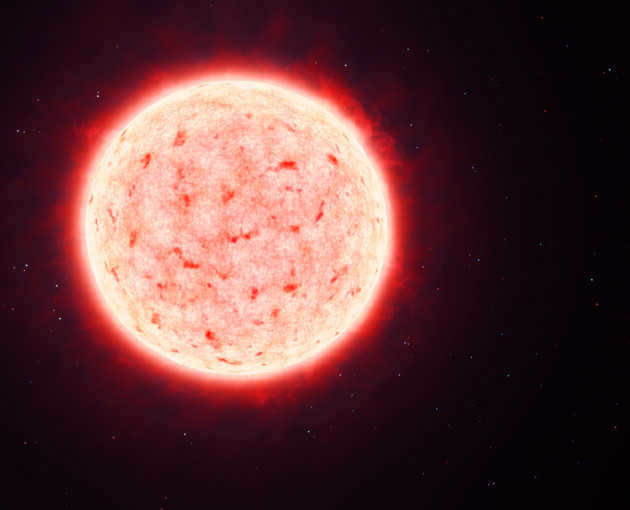
The closest star observable with the unaided eye in the northern hemisphere is Sirius. Sirius is twice the size and mass of the Sun and holds the title of the brightest star in the sky. Situated 8.6 light-years away in the Canis Major constellation, also known as the Big Dog, it is the most well-known star accompanying Orion during winter nights.
How have astronomers determined the distances to stars?
They utilize a technique called parallax. Let’s conduct a small experiment. Extend one arm fully and position your finger near a distant object. Now, alternately open and close your eyes. Observe how your finger appears to move back and forth as you switch between eyes. This is known as the parallax method.
To determine the distance to the stars, one can gauge the angle to a star in relation to a reference point when the Earth is positioned on one side of its orbit, such as during the summer season. Then, after a span of 6 months, when the Earth has shifted to the opposite side of its orbit, the angle to the star can be measured again in relation to a distant object. By measuring this angle, it becomes possible to calculate the star’s distance, assuming it is in close proximity to Earth.
This method can actually be used to measure the distance to the nearest stars, but it is only effective up to a range of 100,000 light-years.
Below is a compilation of the 20 nearest star systems, along with their respective distances measured in light years. Some of these systems consist of multiple stars, but they are considered part of the same system.
| Star | Distance, sv. years |
| Alpha Centauri (Alpha Centauri) | 4.2 |
| Barnard’s Star | 5.9 |
| Wolf 359 (Wolf 359; CN Leo) | 7.8 |
| Lalande 21185. | 8.3 |
| Sirius | 8.6 |
| Luyten 726-8. | 8.7 |
| Ross 154 | 9.7 |
| Ross 248 | 10.3 |
| Epsilon Eridani (Epsilon Eridani) | 10.5 |
| Lacaille 9352. | 10.7 |
| Ross 128 | 10.9 |
| EZ Aquarii. | 11.3 |
| Procyon | 11.4 |
| 61 Cygni | 11.4 |
| Struve 2398 | 11.5 |
| Groombridge 34. | 11.6 |
| Epsilon Indi. | 11.8 |
| DX Cancri. | 11.8 |
| Tau Ceti | 11.9 |
| GJ 106 | 11.9 |
According to information provided by NASA, there are a total of 45 stars located within a distance of 17 light years from our Sun. This number, however, is just a fraction of the vast amount of stars that exist in the universe, estimated to be over 200 billion. It is worth noting that some stars are extremely faint, making them incredibly challenging to detect. With the advancement of technology, there is hope that scientists will be able to discover stars that are even closer to our solar system.
Based on the article you have read, it is titled “The Closest Star to the Sun.”
Although it may seem cliché, the closest star to Earth is, in fact, the Sun. Therefore, it is not entirely accurate to phrase the question in that manner. Our Sun, classified as a yellow dwarf, is not inferior to other stars and is actually one of the most common types of stars found in the Milky Way galaxy. However, since we are discussing stars other than our own, let’s explore which star holds the distinction of being the closest to our Sun.
Alpha Centauri is widely known as the nearest star to us. It has been a popular subject in fiction and is often referred to as our neighboring star. While it is indeed the closest star to us, excluding the Sun, its nature is more complex than it may appear.
Some individuals who pay close attention to detail may refer to Alpha Centauri as Alpha Centauri. The Latin name for this constellation is Centaurus, which translates to Centaur. However, this formal designation is not commonly used. In literature, reference books, movies, and in general, it is universally referred to as Alpha Centauri. The debate between Centaurus and Alpha Centauri is a pointless argument that pedants like to engage in.
Alpha Centauri is not just an ordinary star, but rather a binary star system consisting of two stars labeled A and B. These stars revolve around a common center of mass every 80 years, and they take turns being closer to us. Although both stars are similar to our Sun, the A component is slightly brighter while the B component is slightly fainter.
Both stars can be seen with the naked eye as a single entity, with a brightness of -0.27 m, making Alpha Centauri the third brightest star in the sky from Earth’s perspective.
However, the complexity of Alpha Centauri does not end there. In addition to the A and B components, there is another star in this system known as Proxima Centauri.
Proxima Centauri: The Nearest Star to Earth
Proxima Centauri, a red dwarf, holds the distinction of being the closest star to Earth. It is a part of the Alpha Centauri triple star system, although it is located at a significant distance from the system’s main and larger components – approximately 15,000 astronomical units, equivalent to 0.21 light-years. It is worth noting that this distance is only 20 times smaller than the distance between Proxima Centauri and our planet.
Due to its considerable distance from the center of the system, Proxima Centauri completes an orbit every 500,000 years. Currently, it occupies the orbital section ahead of Alpha Centauri, making Proxima Centauri the closest star to Earth for the coming millennia. However, it will eventually transition to a more distant part of its orbit, at which point Alpha Centauri, specifically its A and B components, will become the closest stars to Earth.
The nearest star to Earth is Proxima Centauri, which is a red dwarf and part of the Alpha Centauri triple system.
In the celestial sphere, Proxima Centauri is located at a distance of 2.2 degrees from Alpha Centauri – roughly equivalent to the size of 4 lunar disks. However, it cannot be seen with the naked eye as its brightness is only 11 m. Therefore, in order to observe this closest star to us, a telescope, even a small one, is required.
Despite being our closest celestial neighbor, Proxima Centauri is relatively faint. It is around 7 times smaller and lighter than the Sun. Even if it were observed from one of the planets orbiting Alpha Centauri (if such planets exist), Proxima Centauri would appear as a dim 5th magnitude star in the sky.
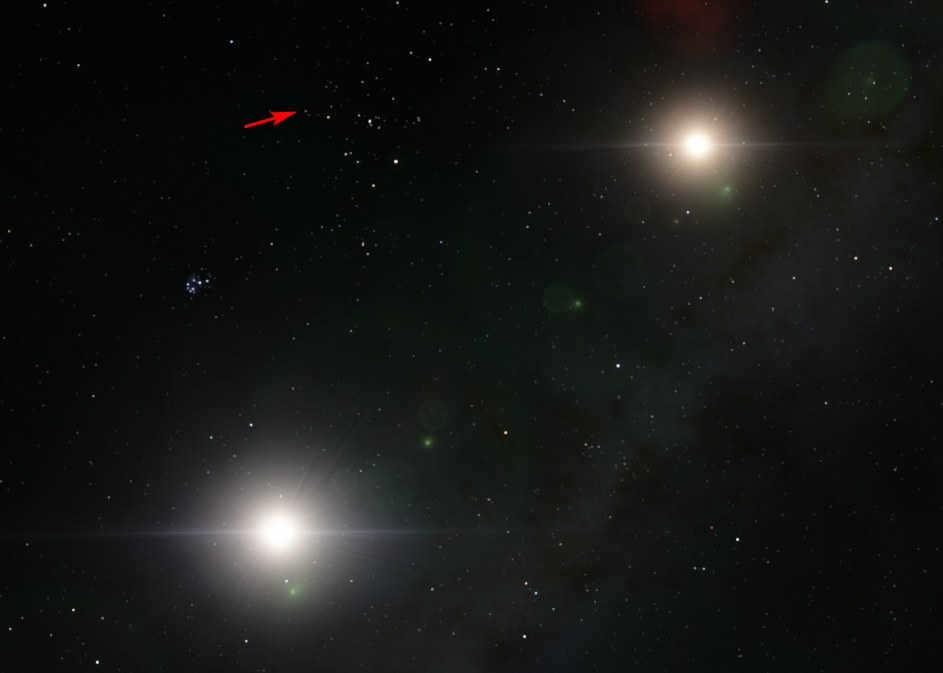
If we were in close proximity to the primary stars of Alpha Centauri, Proxima would appear as a faint celestial body (the reddish star is denoted by the arrow).
In addition, it is worth noting that Proxima Centauri hosts a planet within the habitable zone, which was officially confirmed by the European Southern Observatory in 2016. This planet, akin to Earth in many aspects, is positioned at a distance of 0.5 astronomical units from its host star.
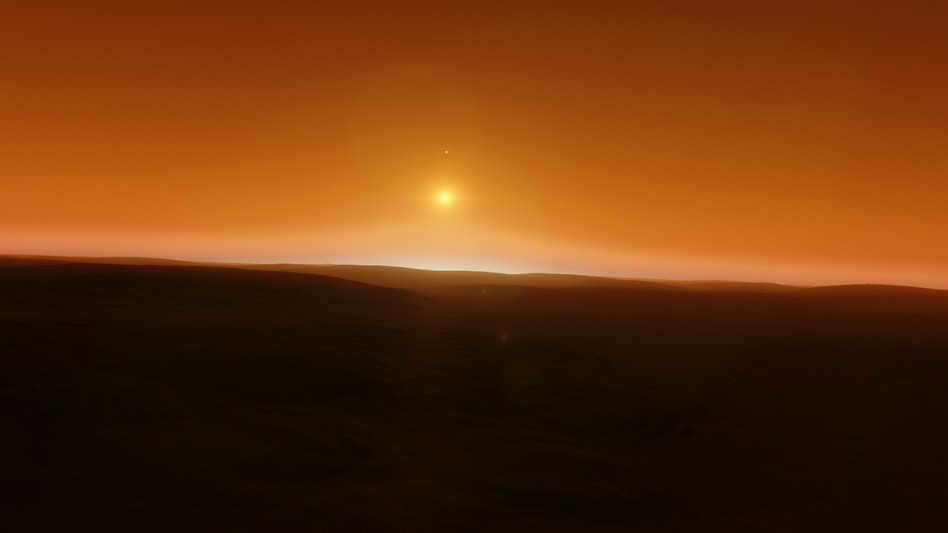
The star that is closest to Earth is called Proxima Centauri. The image above depicts what it might look like in the sky of one of its planets. This image was captured from the Space Engine universe simulator.
However, the existence of life on Proxima Centauri is a highly debated topic. This is mainly due to the fact that Proxima Centauri is an unstable red dwarf star that frequently experiences flares, resulting in a significant increase in radiation levels, particularly in the X-ray spectrum. Despite these challenges, it is possible that life could exist in the planet’s oceans, if they exist, as they could provide some protection. Over the course of billions of years, life on this planet may have evolved and adapted to the unique conditions present. The star itself is approximately 5 billion years old, leaving room for various possibilities.
Additionally, there is speculation that Proxima Centauri possesses a belt of asteroids. This hypothesis is supported by certain data, although further investigation is required to confirm its existence.

Our neighbors are the stars closest to the Sun.
The stars that were and will be closest to Earth
The positions of the stars, just like the solar system, are constantly changing, causing the closest neighbors to shift. Proxima Centauri, along with the entire Alpha Centauri system, are only temporary neighbors. Over time, they will move away, and other stars will take their place as the closest.
Proxima has held the title of closest star for the past 32,000 years, but in another 33,000 years, Ross 248, located in the Andromeda constellation, will take its place. Currently, Ross 248 is quite distant, being 10.3 light-years away, which is twice the distance of Proxima Centauri’s current proximity.
It’s a query that can be appropriately regarded as an ageless classic because even though it may seem obvious, it is one that numerous individuals struggle with answering. On one occasion, I posed this question to a friend, observing as he racked his brain for any well-known celebrities. Imagine his astonishment when I enlightened him about the star that is nearest to our planet.
What is the name of the nearest star to Earth?
It is quite clear. The sun. It is the sole star in our planet’s solar system. The distance to it is approximately 150 million kilometers. Yeah, that is a considerable distance away 🙁

Other celestial bodies
Looking at this query from a different perspective and attempting to address it, which celestial body is the nearest to our planet, excluding the Sun. . Many individuals are aware of Alpha Centauri. the third brightest celestial body in the sky. The distance from our planet is 4.35 light-years away. but it’s not just one celestial body , а but rather a system of three celestial bodies. . The largest one is Alpha Centauri. is significantly larger and more luminous compared to our own celestial body. Alpha Centauri B is much less massive than our own Sun. . The third member of this system. Proxima Centauri, a red dwarf. . It’s a constellation is only visible from areas of the southern hemisphere. and it is impossible to differentiate the red dwarf without the assistance of powerful astronomical equipment. .
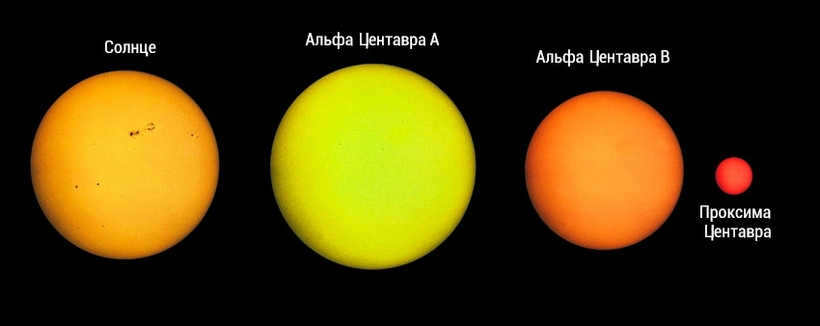
What is the method for measuring the distance to stars?
One way to measure the distance to stars is through the use of parallax. An experiment can be conducted to demonstrate this method. To do so, clench your fist, extend your hand, and extend your thumb. Aim your thumb at any distant object and then close one eye. You will notice that the finger appears to be opposite the target or off to the side depending on which eye is closed. This is the fundamental principle behind the parallax method.
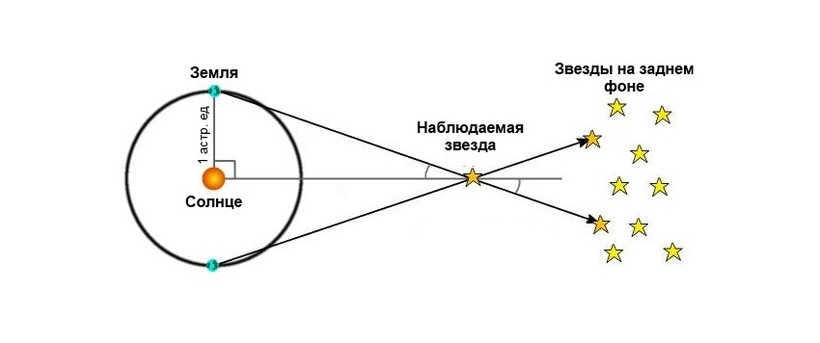
When determining the distance of a celestial body, you calculate the angle to an object relative to a specific reference point, known as a reference point, during the period when the planet is at a specific point of its orbit. This method is applicable only to stars that are within 100 light years from our planet.





